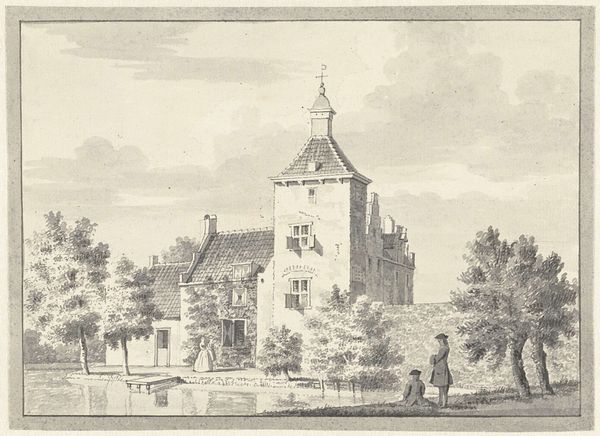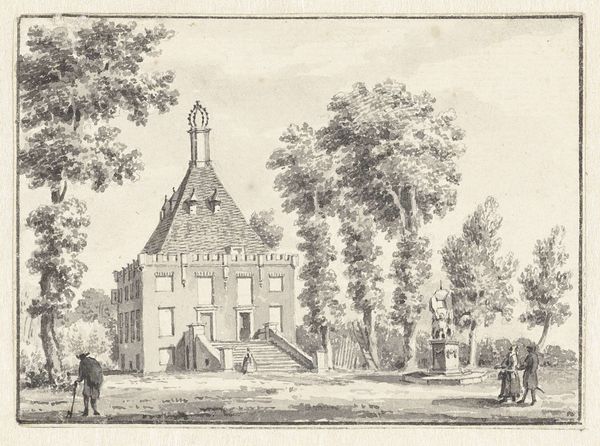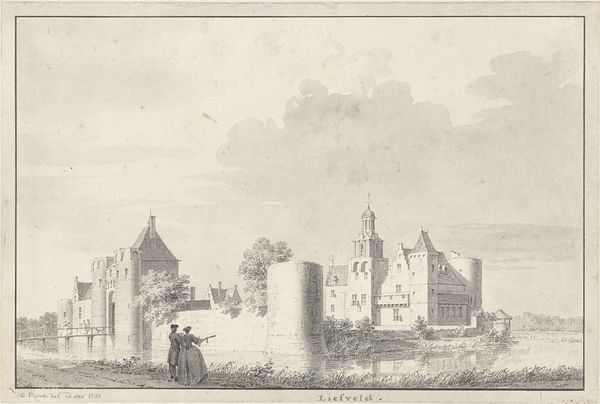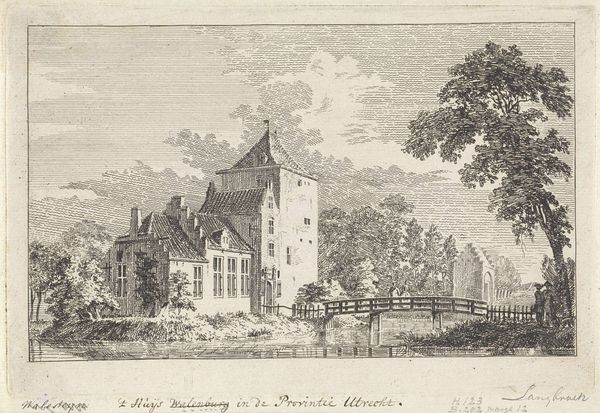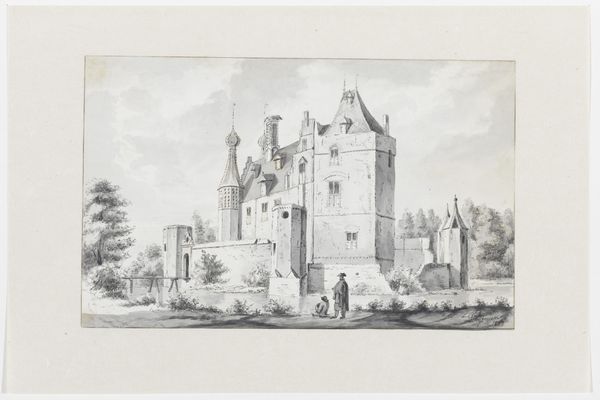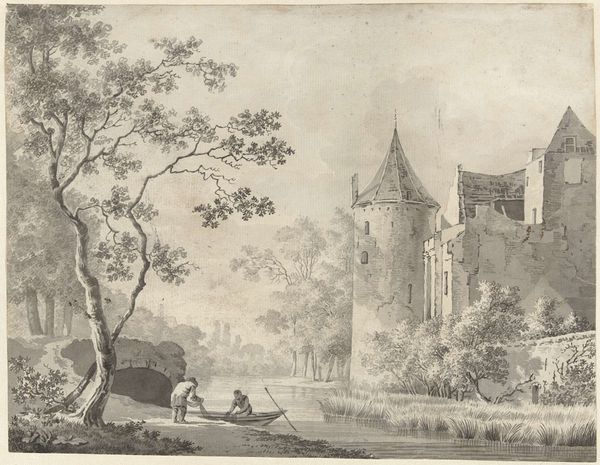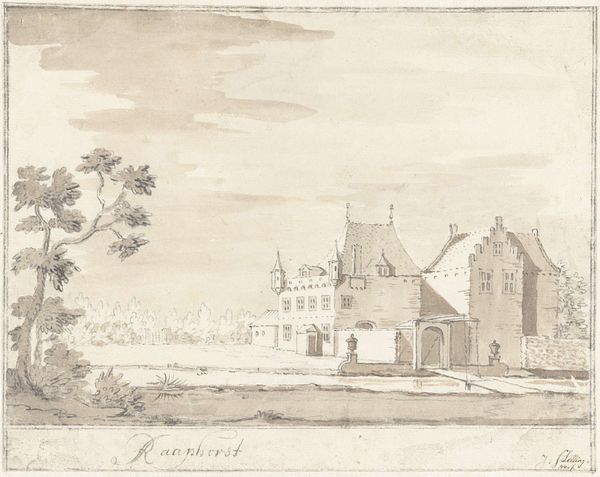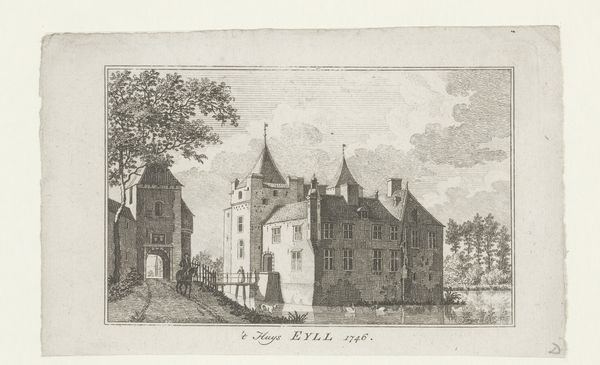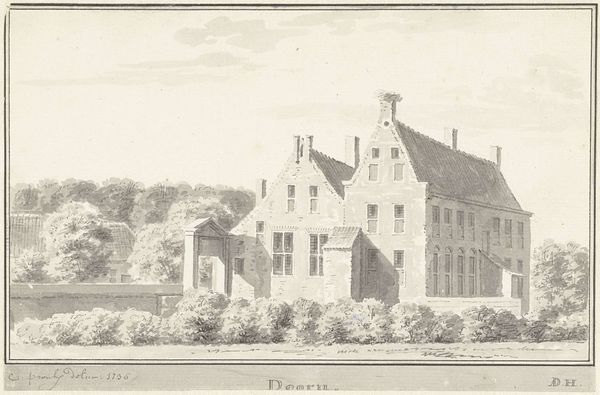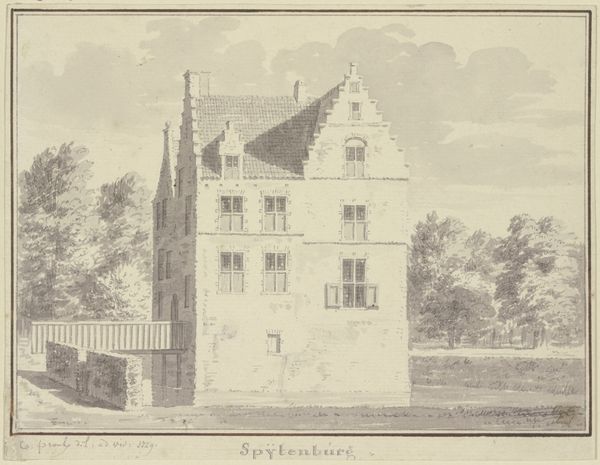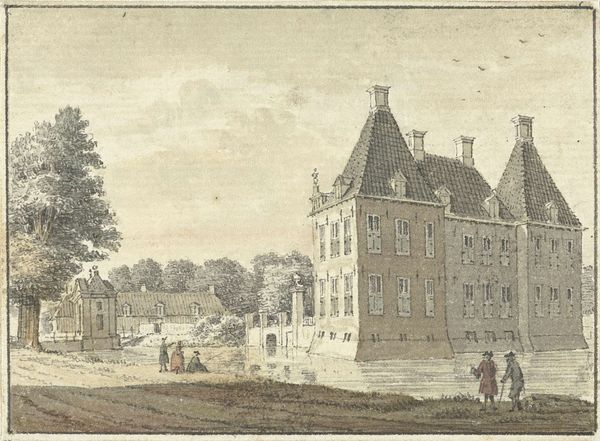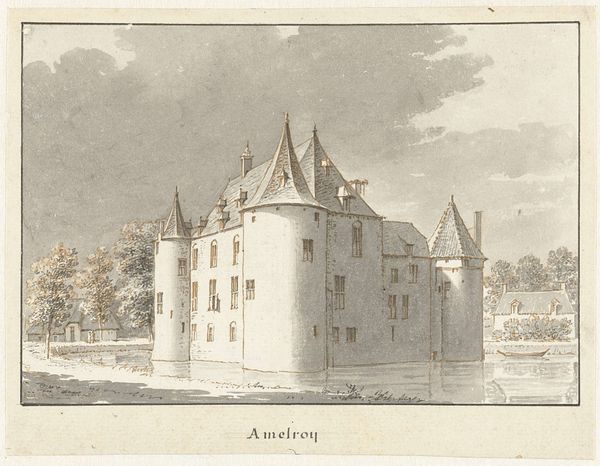
drawing, ink, pen, architecture
#
architectural sketch
#
landscape illustration sketch
#
drawing
#
aged paper
#
quirky sketch
#
sketch book
#
landscape
#
personal sketchbook
#
ink
#
sketchwork
#
pen-ink sketch
#
sketchbook drawing
#
pen
#
storyboard and sketchbook work
#
architecture
Dimensions: height 116 mm, width 158 mm
Copyright: Rijks Museum: Open Domain
Curator: Here we have Hendrik Spilman's "Het kasteel te Zuilichem," a drawing made with pen and ink some time between 1733 and 1784. It’s currently held in the Rijksmuseum. Editor: It gives me such a distinct feeling, like peering through time. The grey wash and thin lines create an atmosphere of gentle melancholy. It's quite unassuming at first glance. Curator: I agree. And beyond the immediate aesthetic, it's also interesting to consider what the image of a castle represented in 18th-century Dutch society. It speaks of power, certainly, but also perhaps of an aspirational lifestyle, considering the rising merchant class. What stories were these images selling? Editor: That’s where I immediately think of the romanticized notion of rural life versus the reality for many. How was the castle, and by extension its inhabitants, positioned within the political and social hierarchy of the time? These idealized scenes served to mask certain power dynamics, didn’t they? Curator: Precisely! And what about access to the artwork itself? Was it meant for private enjoyment, or did it function within a more public sphere? Consider too how class dictated access to artistic creation as much as viewership, where art institutions tended to amplify the tastes of specific social echelons. Editor: Right, these are often curated and circulated based on power. The details in the sketch, the architecture of the castle and the almost regimented trees, invite reflection on ownership and exclusion—both social and physical. Spilman's rendering acts not only as a simple visual document, but as a mirror reflecting cultural values and anxieties. Curator: Indeed. His choice to depict the castle almost serenely belies the complex history and human stories contained within its walls and on that landscape. Editor: Reflecting on Spilman's ink drawing has underscored how seemingly simple landscape scenes are packed with layers of meaning if we ask the right questions. Curator: It reinforces my belief that art serves as both a historical record and a prompt for contemporary critique.
Comments
No comments
Be the first to comment and join the conversation on the ultimate creative platform.

